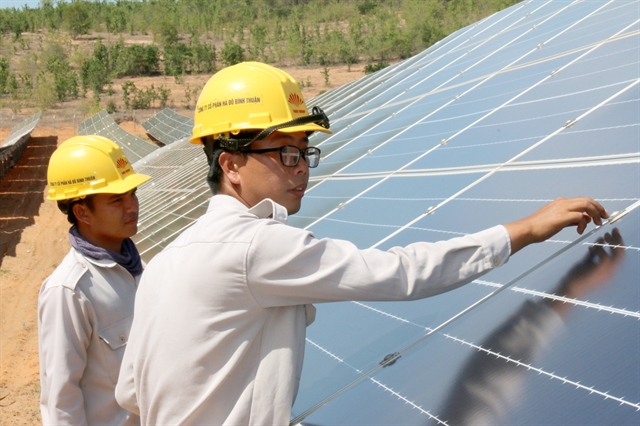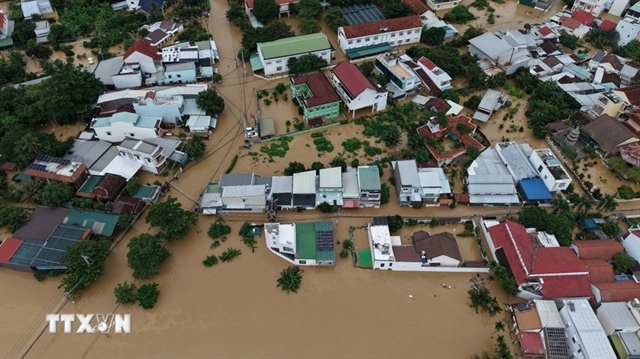 Life & Style
Life & Style

In the last 12 months, solar power capacity has increased by 25,000 per cent, according to the Institute for Energy Economics and Financial Analysis.

|
| Engineers check solar panels in Bắc Bình, Bình Thuận Province. Solar energy capacity has risen meterorically since 2018. VNS/VNA Photo |
Seán Nolan
It’s that time of year again, when world leaders gather for the Conference of the Parties (COP), and a layer of smog settles into the skyline of Hà Nội and other large cities in Việt Nam.
Last year, to much applause, Việt Nam committed to achieving net-zero energy emissions by the middle of the century and, in the 12 months since, has done admirably in implementing these goals.
For example, in the last 12 months, solar power capacity has increased by 25,000 per cent, according to the Institute for Energy Economics and Financial Analysis.
There are now 100,000 solar panels on rooftops of houses and businesses across the country, encouraged by a government scheme that rewards putting excess energy back into the grid.
Even before COP26 last year, in 2020, Việt Nam built the region’s largest solar energy farm, which can generate 1 billion kilowatt hours of electricity.
From having barely any solar energy capacity in 2018, Việt Nam is now Southeast Asia’s biggest generator.
However, problems still lie ahead.
There are large discrepancies between what the system has the capacity to produce and what is actually being generated.
Due to the limitations of an electric grid that is in need of modernisation, the full potential of solar energy can not yet be utilised.
Where renewable energy is falling short, more traditional fossil fuels fill the void, and 38 per cent of Việt Nam’s energy production still comes from coal, according to statistics from Vietnam Electricity.
Furthermore, the initial prohibitive cost of installing solar energy systems and updating the electrical grid to accommodate this new source of energy is holding many local municipalities from giving the green light to the investments needed to benefit from the installed renewables.
The reasons are simple; as a developing country still recovering from the COVID pandemic, Việt Nam’s electricity demands are constantly rising and, for now, fossil fuels like coal are cheaper and more reliable than eco-friendlier alternatives such as solar and wind generated power.
However, as the number of climate-change-induced natural disasters in Việt Nam and around the world rise, and the smoggy haze on the horizon shows, the status quo is not sustainable, and more must be done to ensure that energy transition is prompt, cost-effective and delivers for everyone.
The world made a big statement at COP26 in Glasgow. This year, in Việt Nam and elsewhere, these commitments need to become reality. VNS




